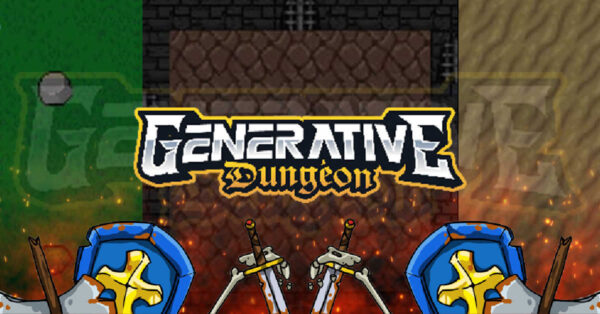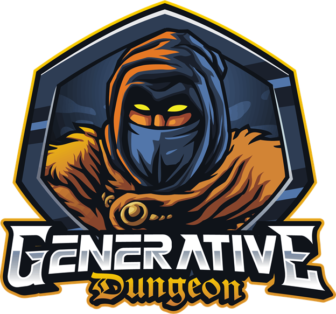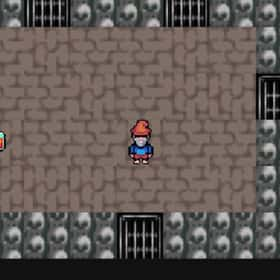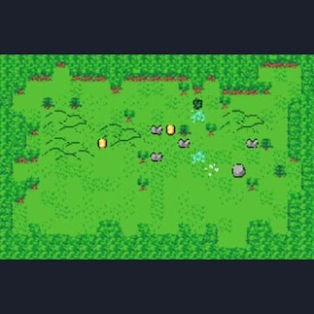


Hi, folks. This week I’d like to talk about Generative Dungeon & the concept of fully playable NFTs. I was lucky enough to win my own dungeon by participating in their numerous giveaways.

That said, I’m not here to talk about any hype surrounding the project, or to pitch the NFTs themselves. I’m much more interested in talking about the potential for fully playable games as NFTs, and the issues those projects might face.
If you’ll remember NFT Worlds, a playable project we discussed previously in our article on buildable worlds, you can see how excitement for actual playable NFTs has only grown over time. Personally, I’m most interested in experiments on the bleeding edge of playable NFTs. Your mileage may vary.
Generative Dungeon, in short, is a collection of multiple level (some with 100+ different floors) generative lite rpg/hack ‘n slash dungeons with multiple traits like starting area, starting spells, avatar, etc.
The innovative part is that it isn’t a jpeg or gif with generated statistics & metadata – each one is a fully playable game unto itself, on mobile or PC, and even directly on the NFT’s OpenSea page.
You might have seen one or two earlier projects make use of the same technique, such as Cyberkongz VX’s avatars with changeable backgrounds & free rotation directly on OpenSea, or Arcade NFT’s NFT arcade cabinets with playable classics in the frame.
Generative Dungeon is a bit different. It isn’t a simple take on a 70’s arcade classic, or a bit of rotation & customization in the frame. These are original, full-scale games with a depth that at least rivals the majority of the NES’ offerings.

I was lucky to follow this project early enough for their first Twitter giveaway, where I won a “Single-floor Dungeon” on the Polygon network. Now, the “dungeon” itself is just a little thing that wouldn’t take 30 seconds to cover every inch of it. The interesting part is that once the mainnet dungeons launched, you could connect the single-floor dungeon with your main dungeon & use the avatar in it.

The gameplay of the single-floors is by no means mind-blowing, but the potential is in playable, and fundamentally interconnectable NFT games. This is the promise of NFT avatars that work in multiple games, in a microcosm. It is absolutely an early foray into this concept, but I can’t help but be excited by the possibilities.
Since launch they have been adding features like the ability to lock your dungeons with a password, reset the leaderboard, and other quality of life improvements to make user-generated “quests” and “contests” in their dungeons a bit easier for dungeon masters.
So, what kind of sorcery is this? Well, in brief, what’s happening is that OpenSea uses iframes to display NFTs, which are basically just an embedded html page in a frame on OpenSea. The frame displays the content the NFT’s IPFS hash is pointing to, and you see a neat little jpeg or animated gif/mp4 NFT.
What Generative Dungeon has done is point the iframes to html pages that contain the javascript games, so it is as playable in the OpenSea iframe as in the larger “viewer” they have on their website. Functionally, the code would look something like this if you were trying to display a dungeon.
<iframe src="https://generativedungeon.com/viewer/?v=1.02&tokenId=1865#game" height="1080" width="1980" </iframe>This means a couple of things: First, the game is able to be embedded wherever you like. If you wanted to collect a few dungeons & have them in an arcade on your website complete with leaderboard, passwords, etc. – it is as easy as tossing the code onto your site.
Second, the games are upgradeable. If they want to add more features, refine the gameplay or the art, or whatever – they can do it. The javascript & resources are centralized, so upgrading them also upgrades the games.
Third, as I said above – the games themselves are centralized. If by some misfortune the website & team were to disappear forever – well, you’d have the NFT, but not much to show for it. Unless, that is, you saved the code from the website, at which point you could probably reproduce it & remint without too much trouble.
I would consider that a potential hurdle more than a “con”, though. Most projects in crypto could disappear at any point, and folks would be out of luck. What has saved them & given the potential for community revivals is the reproducibility of the tech & assets, and so this isn’t much different.
What projects might do is pay for the site & hosting for a longer period of time, with proof, or allow users to download the full code for the game & NFT metadata for their dungeon through the “Owners” tab on the website. Perhaps even decentralized storage & retention?
Like most new ideas in crypto, there will be obstacles to overcome & bugs to iron out, but the possibilities this opens up for developers & artists is incredibly exciting, to me. If you think about all of the fun things you could do in an iframe with unity or a little javascript; the sky is the limit.

Torrent/seedbox aficionado, decentralist, cultural archivist, fundamental analyst, podcast addict, shitcoin-sifter extraordinaire
Tip Jar
BTC: bc1qahxrp47hpguhx8y8r382dekgca34tlv54aufht
Doge: DJRy9gGSUGeyXfVcZXzKLkBv7RmDLv3MhJ
Share This Article
Join 10,000+ forward thinkers! Get crypto education in your inbox.